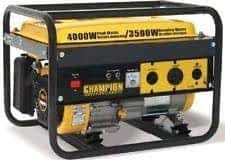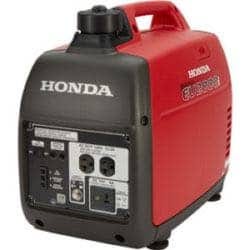The ABC’s of generator noise
Can you hear me now? I hope not!
Dear Mike,
I’ve really learned a lot from some of your RVelectricity articles on generator noise. But do you have a basic version of it without all the math, sort of like generator noise pollution for dummies? —Lost in the numbers
Dear Lost,
All right, so here is the Cliff Notes version on Generator Noise Pollution without all the calculations. For those of you who want to see the mathematics behind it all, I’ll post the Deep Dive version next week. And no, the math isn’t terrible, but you may get a headache at first learning about logarithmic scales. However, no pain, no gain, right? So as requested, here’s the basics of generator noise.
Bring in da noise…
We measure loudness of objects with something called an SPL meter, which stands for Sound Pressure Level. And that measurement is made in a unit called a dB or decibel. The more decibels (dBs) you read on an SPL meter, the louder it is. Just know that a 50 dB generator is really quiet, one that’s 60 dB is starting to get loud, and a 70 dB generator is obnoxiously loud if you’re in a quiet area to begin with. So a generator in the low 50 dB range is hardly noticeable, while one in the upper 60 dB range can be heard from many hundreds of feet away.
Just in case you have an SPL meter to try out, all generator SPL measurements are taken from 7 meters (23 feet) away using the A-Scale. (Read about SPL meter scales in my extended article with the math next week – sorry.)
Now hear this!
Here’s a video I made comparing the noise levels of two types of generators. The first one is a Honda EU3000iS inverter generator running around 52 dB SPL, and the second one is a basic 3,600-watt contractor generator making around 68 dB of noise.
As you can plainly hear, the Honda generator is barely noticeable, but the contractor generator is really obnoxious. Would you want that running anywhere near you in a campground? I didn’t think so….
A noisy generator…
There are two big reasons for the sound level differences. First of all, the contractor generator has the gasoline engine out in the open without any noise dampening around it. And it also has a cheap/noisy muffler that makes a lot of exhaust noise. Plus, it’s an AC generator, which means the gas (or propane) engine has to run at full speed all the time, even when the generator only needs to supply a few watts.
A quiet generator….
On the other hand, inverter generators from Honda, Yamaha and others are built with a lot of sound-dampening material around them. That kills much of the sound of the moving parts. Plus, they have really well-designed mufflers to dampen the sound from the exhaust. Finally, inverter generators really should be called “alternators” because they don’t make AC voltage directly. They really “generate” around 12-volts DC which is then stepped up to 120-volts AC by an inverter, just like you might have in your RV to make 120-volts AC from your house batteries. That allows them to throttle down to a slow idle when the generator doesn’t need to produce full power. And that not only reduces the noise level, that’s also why they’re easier on fuel than a contractor generator that needs to keep the engine running at a full 3,600 RPM all the time.
But are they worth the price?
So are inverter generators worth the extra 200% to 400% price tag compared to a contractor generator? Well, I take noise pollution seriously, so if you plan to run your portable generator in any kind of campground or park I really feel you should be using a quiet inverter generator with a low 52 dB sound level, and not an open-frame contractor generator that makes maybe 68 dB of sound level (noise). I don’t think that open-frame contractor generators belong in any campground setting.
What do you think? Please comment below, but be civil about it. This is not a flame war, just an intelligent discussion.
Let’s play safe out there…. Mike







It’s the A-Weighted version so it should work correctly. Use a tape measure to position it 23 feet away from the generator outside, and it should give you a reasonably accurate SPL measurement. Everything else needs to be quiet…
Mike, there are several apps for iPhone that can be used for spl measurements so a dedicated device isn’t needed for approximate measurements. I use DB Pro which works pretty well. Great article on sound levels from generators.